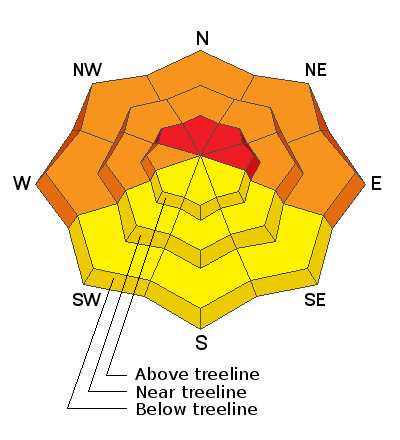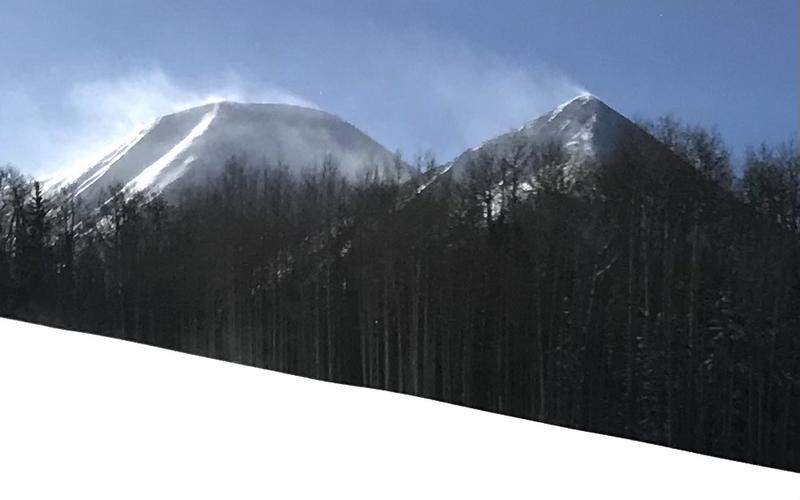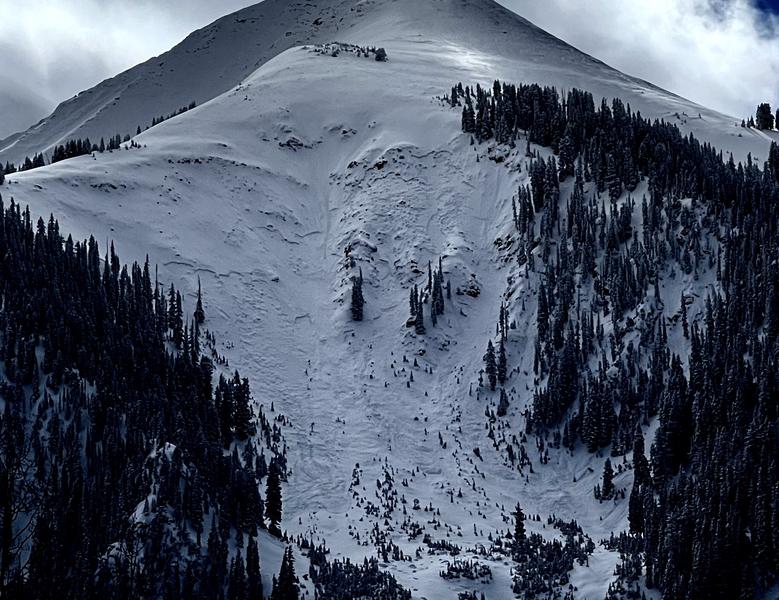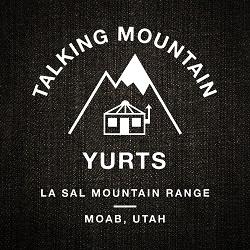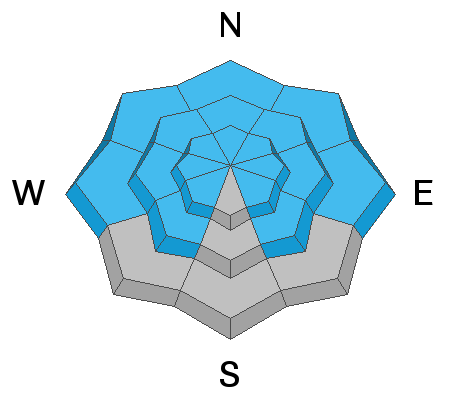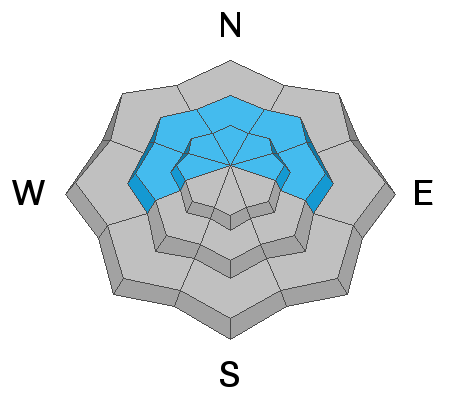The Geyser Pass Road is plowed with a snow-packed surface.
The Lower Utah Nordic Alliance (LUNA) groomed all trails yesterday. Follow LUNA on Instagram @luna_moab.
24 Hour Snow 0" 72 Hour Snow 5" Base Depth in Gold Basin 39" Wind SE 20-25 G30 Temp 10F
The story is the wind. Strong southerly winds blew in the 25-35 mph range all day yesterday. They backed off slightly overnight but are on the rise again this morning and will continue to increase throughout the day. Skies will be mostly cloudy and high temps will be near 30F. Remnants of an atmospheric river and associated low that has slammed California will move onshore and begin to move across the Great Basin tomorrow. With most of the energy diminished from this powerful system, we're likely to only see a few inches of snow Friday night. High pressure builds on Sunday with models suggesting another system moving into the region mid-week.
Snowpack Discussion
Blowing and drifting snow has stressed our weak and faceted snowpack to the breaking point, and reports of more natural avalanches continue to come in. Snow totals since last Friday are in the 15"-20" range and this snow has fallen on a veritable house of cards. Signs of instability such as cracking and collapsing continue to be reported, even on slopes with southerly aspects. In addition to dangerous avalanche conditions, we also continue to have low coverage, so add that to your list of hazards and be safe out there.
Strong southerly winds have dangerously overloaded north facing slopes. Brian Murdock photo.
I observed several natural avalanches in Gold Basin on Monday that likely ran during the storm Sunday night. These all occurred in very steep, radical, N-NE facing terrain and some were repeat runners from the Dec 28 cycle. Tim Mathews detailed this slide in
Exxon's Folly, and I've reported on several slides that occurred on the
Snaggletooth Ridge. Mike Lobeck sent in this report of an avalanche on the
Tukno Shoulder that also ran on Sunday, and Mark Sevenoff reported seeing debris in
Horse Creek yesterday. I also received a vague report of natural activity in Dark Canyon.
Exxon's Folly avalanche observed on Jan 25. Photo by Tim Mathews.

